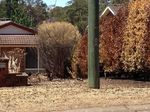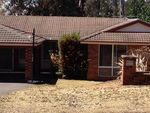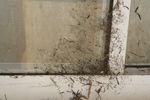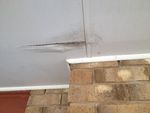PREPARING YOUR PROPERTY FOR BUSH FIRE
←
→
Page content transcription
If your browser does not render page correctly, please read the page content below
PREPARING YOUR PROPERTY FOR BUSH FIRE
No property can ever be completely safe from bush fire, but there are ways we can mitigate the risk.
What we know is:
Burning debris, or embers, attack homes some time and distance from the main fire front, and this
is the main source of building ignition,
Radiant heat from an intense bushfire plays a significant role in pre-heating buildings prior to their
ignition,
Direct flame contact occurs if close bushland, garden or even dry garden mulch carries flame to the
building.
Extreme wind effects associated with major bushfires can lift roofs, smash windows or otherwise
damage buildings in ways that then opens them up to destruction by fire.
By increasing our awareness of risks associated with bush fire, will assist in better understanding how a
bush fire may behave if one was to start, and what the risks to the property and yourself may be.
Identifying hazards, and risks associated with those hazards will help you understand what the risks are
to your property i.e. Direct Flame contact, Radiant Heat exposure, Ember Attack. This will allow you to
identify the weak points that may render your home vulnerable, and will allow you to develop risk
management strategies to treat those vulnerabilities to help prepare you and your home.
For instance, if your property were located on the urban interface, which adjoins forest, then you would
consider how well the exposure side (side facing the forest) of your home and garden is prepared. If
the property were located streets back from the urban interface, you would consider preparing for
ember attack.
Deciding where to start and what is required to prepare your property for bush fire can be challenging
and daunting for some. There is no one magic treatment, but through careful planning and the use of a
suite of activities, will help prepare your property.
Removing over hanging branches from the roof, cleaning gutters, raking and removing leaves and
fallen vegetation plays an important component of preparation, but preparing does not stop there.
Ensuring that all roof tiles are in place, not loose, or open which would allow windblown embers to
penetrate the roof cavity. If the roof is metal, then ensure that barge flashing is secure and in place, and
there are no gaps exposed. Ensure there is no collection of combustible leaf matter in valleys or caught
under tin or tiles.
Exposed timbers on the exterior of buildings deteriorate with age, which tend to dry and crack. This
provides an opportunity for embers to attach to the building, subsequently catching fire. This often
occurs with dry fascia boards or timber cladding. Checking around the home for exposed timbers with
cracks or peeling paint, and applying remedial action to these areas will help preparing the home.
Retrofitting or installing passive bush fire protection systems has benefits. Passive bush fire protection
systems relates to fixtures added to your home that will help protect it i.e. replacing existing nylon
screens with metal screens, fitted to windows and doors to prevent embers entering the home during
ember attack. Installation of gutter guard (metal screens) to prevent gutters filling up with dry leaf
matter, are a worthy investment, and will help to protect your home.
Positioning of gas bottles connected to the home for heating or cooking purposes must have the vent
pointed towards an open space away from the home. If you intend to leave early, turning the gas off at
the bottle, and if possible disconnecting the bottle prior to leaving can provide benefits.
For more information contact Mid Coast District Office on 1300 643 262
Community Protection Planning (02) 66 910 400 E: communityprotectionplans@rfs.nsw.gov.auCobwebs are a great collector of organic matter, so prior to each bush fire season, and where possible,
remove cobwebs using a soft headed broom, or brush from around the property. A fire starting near a
window in cobwebs could cause the glass to crack allowing fire to enter the home.
Cobwebs collect
organic matter, as
well as ash &
embers from bush
fire.
Cracked timber and
cobwebs provide an
opportunity for embers
to penetrate and start a
fire
Having an established asset protection zone is essential. The choice of plant and garden locations
surrounding your home play an important role. You should avoid planting shrubs and gardens under
windows, and if your home exterior is timber cladding, then you should consider minimising having
garden beds adjoining your home.
If the home is elevated, then ensuring that the subfloor area is free from material, i.e. stored old timber,
lawnmowers, plastic pipe, empty fuel containers and the like, will reduce risk of fire developing under
the home. It may be suitable to ember proof the subfloor area to stop embers blowing under your
home.
Shrubs are often planted in gardens to encourage birds to feed on the flowers or to nest. We need to
ensure that where we choose to plant the various type of shrubs is a location that will not provide a path
that will lead fire to the property.
There is often a tendency to plant shrubs and create gardens at the front of homes, but if the front of
the home is facing the hazard, then we need to think carefully about how we will manage these shrubs,
and or gardens. Research variety’s that will not produce excess fuel, or will consume a lot of time to
manage. Time-consuming tasks are those tasks that we tend to put aside or defer, and often forgotten,
with the consequence of unmanaged gardens to provide fire a path to the property.
The following images are good examples to demonstrate the above discussion points I found while
walking around a community neighbourhood. The Callistemon produce a glorious display of flowers to
attract bird life, but also produce significant amounts of dry fuel and also have a course bark. The
Camellia, on the other hand, demonstrate a lack of combustible fuel available and have smooth bark.
Smooth bark trees and shrubs is preferable in gardens, as they produce less fuel and embers are less
likely to attach.
Produced by Planning & Environment Services (North)
Community Protection Planning (02) 66 910 400 E: communityprotectionplans@rfs.nsw.gov.auMaintaining ground fuels surrounding the base of the shrubs is extremely important. The Callistemon
pictured has a rubber tyre used as a flowerbed and containing organic mulch, with dry grass
surrounding, while the Camellia has pebble used as a mulch, and is clear of any flammable matter.
Dry fuel found
accumulated due
to lack of
maintenance.
Rough bark
where embers
can lodge.
Planting under
shrubs will
allow ground
fire to elevate
in to foliage
above
Callistemon
Clean smooth
bark and
leaves with no
available dry
fuel
Gravel in
place of bark
chip/mulch
Camellia
Produced by Planning & Environment Services (North)
Community Protection Planning (02) 66 910 400 E: communityprotectionplans@rfs.nsw.gov.auThe choice of what you plant, or allow existing in the garden does have an impact on the preparedness
of the home. Through careful planning and maintenance of gardens, we reduce the opportunity for fire
to develop close to property during bush fire activity.
Mulch serves a purpose in gardens, but unfortunately dependant on the type of mulch we use, also
provides fuel for fire. An important point to remember when using organic material as mulch is that
mulch is one of the worst materials to have near a house. It is difficult to extinguish and easily
transports low-level surface fire to the building along the ground. Research shows that fire has
destroyed houses after the fire front has passed, when the mulch previously thought to been
extinguished reignited.
Planning requires consideration be given to how gardens will be maintained through prolonged periods
of little or no rain, if the property is reliant on tank water, or if water restrictions are imposed if the
property is connected to mains supply.
The ability to activate a tap or sprinkler to apply water to the garden prior to, and during a bush fire may
not be an option. In reality, there is the likelihood that reticulated water supply maybe diminished due
to various reasons. If the property is reliant on tank water, then it is highly likely during the summer
months, water storage is probably going to be low, or if you are reliant on power for the pump, then it is
likely power may be lost. Installing a dedicated water supply with either a petrol or a diesel pump is a
good back up option.
Radiant
Heat
Fire
Path
Radiant Heat will dry out foliage ahead of
the fire front. In this image, planting
provides a direct path for fire to the
property
Produced by Planning & Environment Services (North)
Community Protection Planning (02) 66 910 400 E: communityprotectionplans@rfs.nsw.gov.auEmber Attack
Radiant heat
Radiant Heat impact on garden hedge,
with ember attack igniting grass
clippings used as mulch under small
shrubs either side of entrance.
The information contained in this document touches briefly on a few key actions to assist when
planning to prepare the property/family home.
The aim of the information is to encourage conversation between family, friends and neighbours, so
communities can work collectively together to prepare for bush fire.
Having a well prepared home, and understanding how fire will behave, and the associated risks, will
also assist when developing a Bush Fire Survival Plan.
Preparing a property is not a one off activity; it will involve ongoing maintenance and persistence to
keep the property prepared for bush fire.
Remember, No property can ever be completely safe from bush fire, but by having a well prepared
home and property, will increase its chance of survival during bush fire attack.
Further information is available:
Visiting www.rfs.nsw.gov.au,
Mid Coast District Office on 1300 643 262
Community Protection Planning Officers (02) 66 910 400
Emailing Community Protection Planning Officer Ian Cook at Ian.Cook@rfs.nsw.gov.au.
Produced by Planning & Environment Services (North)
Community Protection Planning (02) 66 910 400 E: communityprotectionplans@rfs.nsw.gov.auYou can also read



























































